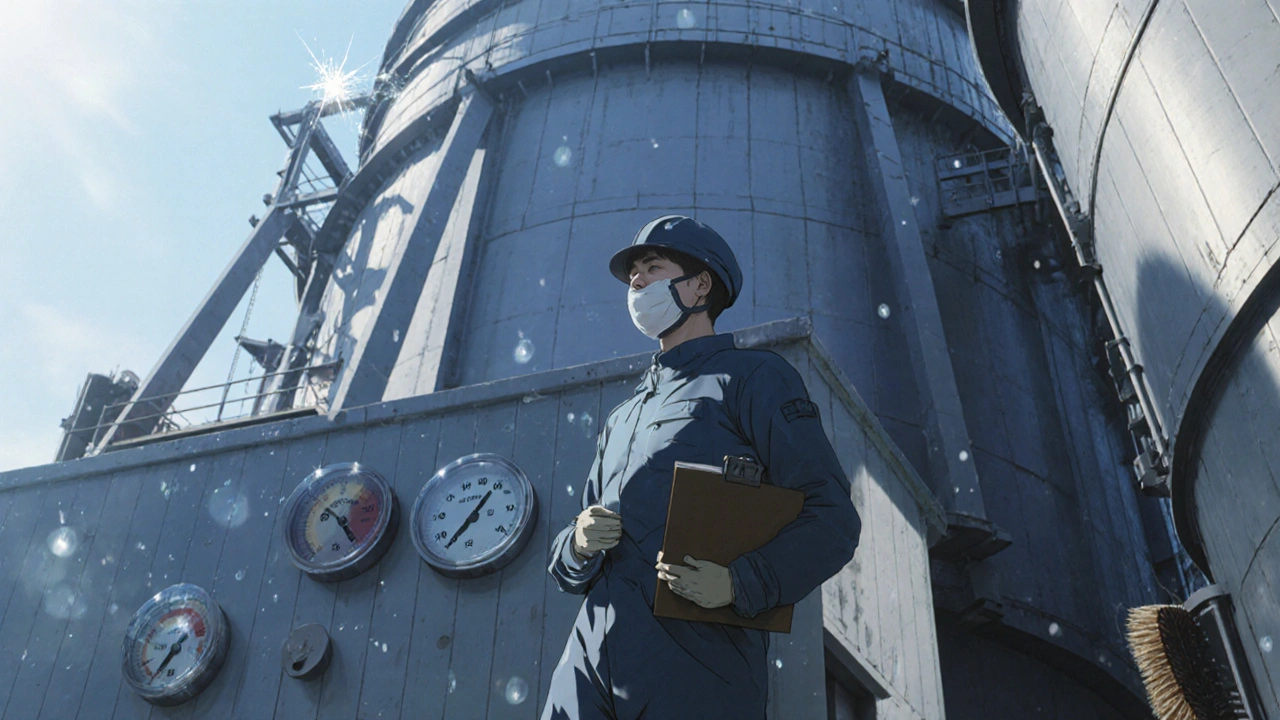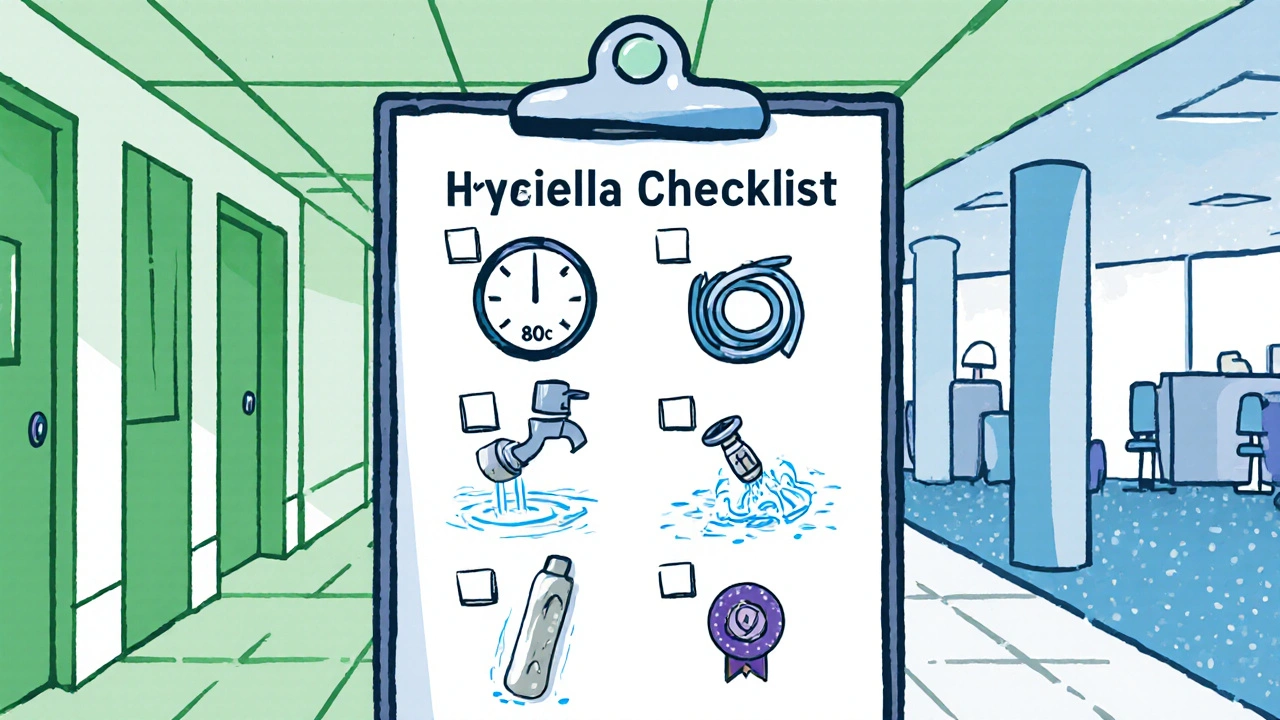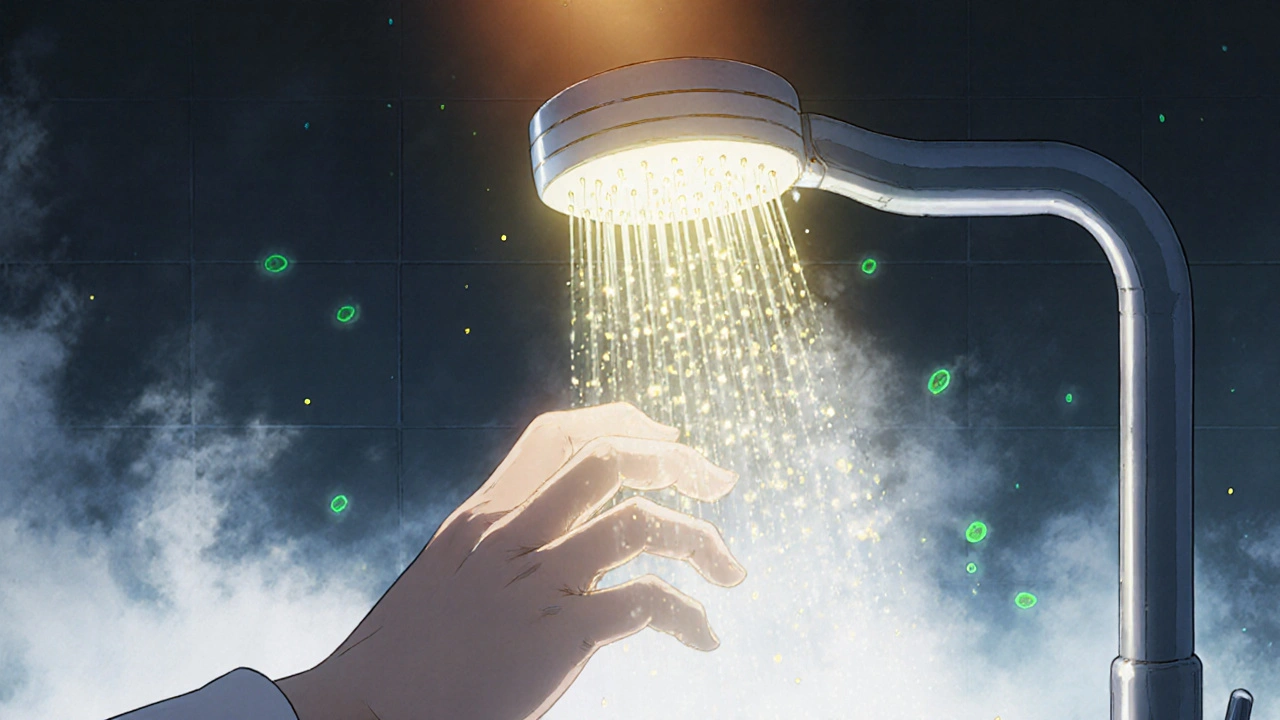Legionella Risk Assessment Tool
This tool helps assess the risk of Legionella contamination in your water system based on key factors discussed in the article.
Imagine turning on a shower and, instead of a refreshing start, exposing yourself to a hidden bacterial threat. That’s the reality of Legionnaire's disease when water systems aren’t kept clean. Understanding why hygiene matters and how to act can keep you and your community safe.
What is Legionnaire’s Disease?
Legionnaire’s disease is a severe form of pneumonia caused by inhaling water droplets contaminated with Legionella bacteria. First identified after a 1976 outbreak at an American hotel, the illness can range from mild flu‑like symptoms to life‑threatening lung infection, especially in older adults or people with weakened immune systems.
How Legionella Spreads Through Water
The culprit, Legionella bacteria, thrives in warm, stagnant water. When water is aerosolized-turned into a fine mist-tiny droplets can carry the bacteria into the lungs.
Common sources of aerosolized water include:
- Showers and taps
- Hot tubs and spas
- Cooling towers on office buildings
- Decorative fountains
These devices create the perfect launchpad for Legionella if they aren’t properly maintained.
The Hygiene Connection: Why Clean Water Matters
Good hygiene isn’t just about personal habits; it extends to the maintenance of entire water systems. When a hot water system stores water at temperatures that can promote bacterial growth if not regularly flushed or treated, the risk skyrockets.
Similarly, a cooling tower cools industrial or commercial HVAC systems by recirculating water, providing a wet, warm environment ideal for Legionella can become a silent reservoir if water treatment protocols are ignored.

Key Hygiene Practices to Stop Legionella
- Maintain Optimal Temperatures: Keep hot water above 60 °C (140 °F) and cold water below 20 °C (68 °F). If you can’t maintain these levels, schedule regular thermal disinfection cycles. \n
- Regular Flushing: Run water through taps, showers, and hoses at least once a week, especially in under‑used areas such as guest rooms or seasonal facilities.
- Clean Aerators and Nozzles: Remove and disinfect spray heads, faucet aerators, and shower heads every three months to prevent biofilm buildup.
- Implement Chemical Disinfection: Use approved disinfectants (e.g., chlorine) to keep water free of bacteria. Follow manufacturer dosage guidelines.
- Inspect and Service Cooling Towers: Conduct quarterly inspections, clean debris, and ensure biocide dosing is consistent.
- Adopt Advanced Treatments: Consider copper‑silver ionization or ultraviolet (UV) systems for high‑risk facilities.
Comparing Common Disinfection Methods
| Method | Mechanism | Advantages | Limitations | Typical Use Cases |
|---|---|---|---|---|
| Chlorine | Oxidative damage to bacterial cell walls | Low cost, easy to dose | Can corrode metals, taste issues | Municipal water, small facilities |
| Copper‑Silver Ionization | Metal ions disrupt enzyme function | Continuous protection, minimal taste impact | Higher upfront cost, requires monitoring | Hospitals, hotels, large cooling towers |
| Ultraviolet (UV) Light | DNA damage prevents replication | Residue‑free, fast treatment | No residual effect; water must be clear | Point‑of‑use systems, water features |
| Thermal Disinfection | Heat denatures proteins and membranes | Effective against biofilm | Energy intensive, may damage equipment | Large hot‑water loops, industrial processes |
Monitoring and Early Detection
Even with rigorous hygiene, regular testing is essential. Sample water from strategic points-taps, hot‑water storage, cooling towers-and send it to a certified lab for Legionella quantification.
Special attention should be given to immunocompromised individuals who are more likely to develop severe disease when exposed to Legionella. Facilities serving hospitals, nursing homes, or dialysis centers must adopt stricter monitoring intervals (often monthly).

Common Pitfalls and Myths
- Myth: “If the water looks clean, it’s safe.”
Reality: Legionella is invisible; clear water can still harbor millions of bacteria. - Myth: “Only large buildings need disinfection.”
Reality: Small hotels, schools, and even residential homes with recirculating hot‑water systems can be affected. - Myth: “Chemical treatments are unnecessary if I flush the system.”
Reality: Flushing reduces planktonic bacteria but doesn’t eradicate biofilm, where Legionella hides.
Quick Hygiene Checklist for Legionella Prevention
- Set hot water to ≥60 °C and cold water to ≤20 °C.
- Flush all outlets weekly; document the activity.
- Disinfect aerators, shower heads, and cooling‑tower basins quarterly.
- Choose a disinfection method that fits your facility’s size and budget.
- Schedule lab‑tested water samples at least semi‑annually (more often for high‑risk sites).
- Train maintenance staff on Legionella signs and response protocols.
Frequently Asked Questions
Can Legionella survive in cold water?
Yes. While the bacteria prefers warm temperatures (25‑45 °C), it can persist in cold water that isn’t regularly refreshed, especially if biofilm forms inside pipes.
How long does it take for a thermal disinfection cycle to be effective?
A standard protocol heats water to 70 °C (158 °F) and holds it for at least 30 minutes. This kills >99.9% of Legionella in the system.
Are UV systems enough on their own?
UV effectively inactivates bacteria at the point of treatment, but it leaves no residual protection. Combining UV with a low‑level disinfectant offers the best defense.
What symptoms should prompt a medical check for Legionnaire’s disease?
High fever, chills, cough (often producing mucus), muscle aches, and shortness of breath. If you’ve been exposed to a potential water source, seek care quickly.
Is there a vaccine for Legionella?
No approved vaccine exists for the general public. Prevention relies entirely on water‑system hygiene and early detection.

Brandy Eichberger
October 21, 2025 AT 16:20Ah, the intricate ballet of thermodynamics and microbiology! Maintaining those temperature thresholds isn’t just a chore; it’s an art form that separates the meticulous from the merely functional. Kudos to anyone who treats a hot‑water loop with the reverence of a fine wine cellar. Keep those pipes humming in perfect pitch, dear colleagues.
Eli Soler Caralt
October 22, 2025 AT 01:40i reckon tha real philosophe in the room is that water, like thoughts, can be crystal clear or teeming with unseen critters 🌊💭. if you ignore the silent legion, you’re basically hosting a microscopic soirée you didn’t RSVP to 😅.
Eryn Wells
October 22, 2025 AT 02:40Everyone, let’s remember that Legionella doesn’t discriminate – it loves warm, still water just as much as we love a good cuppa! 🌍💧 Share these hygiene tips far and wide, and let’s keep our communities safe together. 😊
Kathrynne Krause
October 22, 2025 AT 12:00Alright team, picture this: a sparkling fountain of health where every droplet is sanitized and every shower sings a clean‑water anthem! 🎶🚿 Let’s pump up those temperatures, give those aerators a spa‑day, and turn our facilities into fortresses against Legionella. We’ve got the power – let’s wield it with colour and flair!
Chirag Muthoo
October 22, 2025 AT 13:00Esteemed colleagues, I would like to underscore the paramount importance of adhering to the recommended thermal thresholds. By ensuring hot water remains above 60 °C and cold water below 20 °C, we significantly diminish the risk of Legionella proliferation. Your diligent compliance is most appreciated.
Angela Koulouris
October 22, 2025 AT 14:00Great point on temperature control! Let’s also remember to log each flushing event in a shared spreadsheet – a visual reminder that we’re staying on top of the game. Consistency and documentation are the twin pillars of a safe water system.
Harry Bhullar
October 23, 2025 AT 08:13When it comes to Legionella prevention, the devil truly resides in the details, and those details are best tackled with a systematic, evidence‑based approach that spans the entire lifecycle of a water distribution system. First, understanding the thermodynamics of bacterial growth reveals why temperatures between 25 °C and 45 °C constitute the sweet spot for Legionella proliferation, a fact that underscores the necessity of maintaining hot‑water loops above 60 °C and cold‑water reserves below 20 °C. Second, the phenomenon of biofilm formation cannot be overstated; these slimy matrices provide a sanctuary for microbes, shielding them from sporadic flushing and chemical interventions. Consequently, routine mechanical cleaning of aerators, showerheads, and cooling‑tower basins must be complemented by chemical disinfection regimens, whether chlorine, copper‑silver ionization, or ultraviolet irradiation, each with its own mechanistic advantages and operational constraints. Third, thermal disinfection cycles-typically a sustained 70 °C hold for 30 minutes-have been demonstrated in peer‑reviewed studies to achieve >99.9 % reduction in viable Legionella counts, yet the energy demands of such protocols necessitate careful cost‑benefit analysis, especially in large‑scale facilities. Fourth, monitoring protocols should involve periodic sampling from high‑risk nodes, such as dead‑leg pipes and recirculating loops, with laboratory quantification using culture or PCR methods to provide actionable data. Fifth, the integration of real‑time temperature loggers and automated dosing pumps can reduce human error and ensure consistent biocide residuals. Sixth, staff training is essential; maintenance personnel must recognize early warning signs-like unexplained temperature fluctuations or visible scaling-and be equipped with standardized response plans. Seventh, risk assessment frameworks, such as the ASHRAE 188 guideline, provide a structured methodology to categorize buildings by vulnerability, allowing resource allocation to prioritize hospitals, elder‑care facilities, and high‑rise office towers. Eighth, emerging technologies like nanofiltration and advanced oxidation processes hold promise for future upgrades, offering the potential to eradicate planktonic and sessile microorganisms simultaneously. Ninth, it is prudent to maintain a clear line of communication with public health authorities, ensuring that any outbreak investigations are supported by robust environmental data. Tenth, continuous improvement cycles-including post‑intervention audits and adaptive management-are vital to sustain long‑term efficacy. In summary, a holistic strategy that blends temperature control, mechanical cleaning, chemical treatment, vigilant monitoring, staff education, and technological innovation constitutes the gold standard for Legionella risk mitigation, safeguarding both public health and institutional reputation.
Giusto Madison
October 23, 2025 AT 09:13Listen up: if you think a quick flush is enough, you’re dead wrong. You need a full‑blown, multi‑layered defense-thermal spikes, biocide dosing, and regular biofilm scrubbing. Stop cutting corners and get serious about your water safety plan.
erica fenty
October 24, 2025 AT 12:00Legionella mitigation requires proactive SOPs, risk‑based monitoring, and compliance with ASHRAE 188; otherwise, facilities face elevated exposure risk, especially in high‑occupancy zones; implement tiered disinfection strategies now.
Xavier Lusky
October 24, 2025 AT 13:00They don’t tell you that the real danger is in the data they withhold-big water companies are covering up Legionella hotspots to protect their profits, and the chemicals they add are just a smokescreen.
John Price
October 25, 2025 AT 15:46Keep flushing, keep safe.